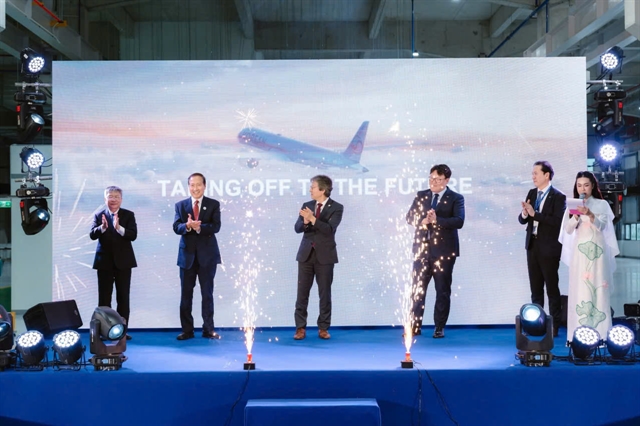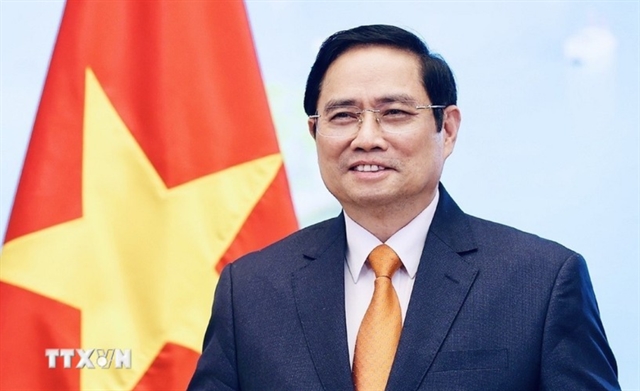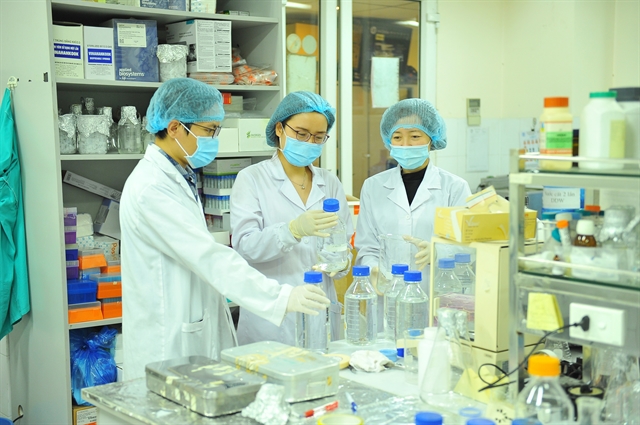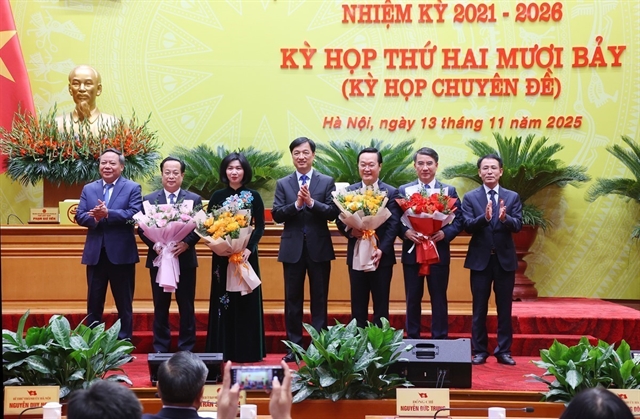 Economy
Economy

 |
| Researchers at the National Institute Of Hygiene And Epidemiology. — VNA/VNS Photo |
HÀ NỘI — The Government has urged Hà Nội and HCM City to quickly finish the preparation required to open their technology trading centres no later than the end of 2024. Đà Nẵng, the largest city in Việt Nam's central region, was similarly told to open its own by the end of 2025.
The introduction of the centres is part of the Government's efforts to bolster the tech market, to speed up the development of science and technology in the country, as well as to address a number of issues that have been plaguing the sector for years.
Việt Nam's technology and science sector has not been able to market its products to domestic businesses, according to Minister of Science and Technology Huỳnh Thành Đạt.
Đạt said while the supply side is ample, with revenue from technology transfer reaching about VNĐ1.3 trillion in the period from 2009 to 2019 for the HCM City University of Technology alone, the Vietnamese research and development institute's share of the technology market was estimated at just about 25 per cent.
According to the minister, only around 16 per cent of businesses asked showed interest in Vietnamese science and technology products, many cited difficulties in making marketable products from said technologies, especially those that received funding from the State's budget due to legal complications.
For example, the Hanoi Academy of Science and Technology currently holds over 400 technologies ready and available for business transfer. Among these, 40-50 of them were patents.
In addition, there has not been a coordinated effort to market technologies from the above-mentioned institutes to the business community. This has resulted in a supply-demand mismatch in which demand for consumer technologies, especially among small-to-medium-sized businesses, remained high and transfer of technologies to companies stayed very limited, mainly in the forms of small purchases of machines and equipment.
To make matters worse, Vietnamese businesses often face many challenges in buying, absorbing and mastering new technologies, partly due to a less-than-demanding market which forces them to constantly be on the lookout for newer and better technologies.
The minister urged the Government to consider the formation of additional intermediary organisations that help connect research and development institutes to businesses, promote and implement technology transfers, commercialise inventions and innovations, as well as develop a technology trading market.
By the end of 2022, there were only 20 technology trading floors, 63 centres for applying advanced science, four high-tech industrial zones, eight software parks and 186 organisations providing industrial property representation services across the country.
In 2021-22, there were 161 technology transfer contracts nationwide (including extended, amended, and supplemented contracts), with a total value of over VNĐ30 trillion but the majority was signed with foreign-invested businesses (VNĐ28 trillion), mainly in the fields of electronics manufacturing, automobiles, motorcycles, pharmaceuticals, medical equipment, petrochemicals, cosmetics, beverages, biology, animal husbandry, mineral extraction and processing, and construction.
As research institutes often lack the capacity to produce machinery and equipment, Vietnamese technology transfers often just included the transferring of tech documents, training and providing technical support to the recipients. — VNS




